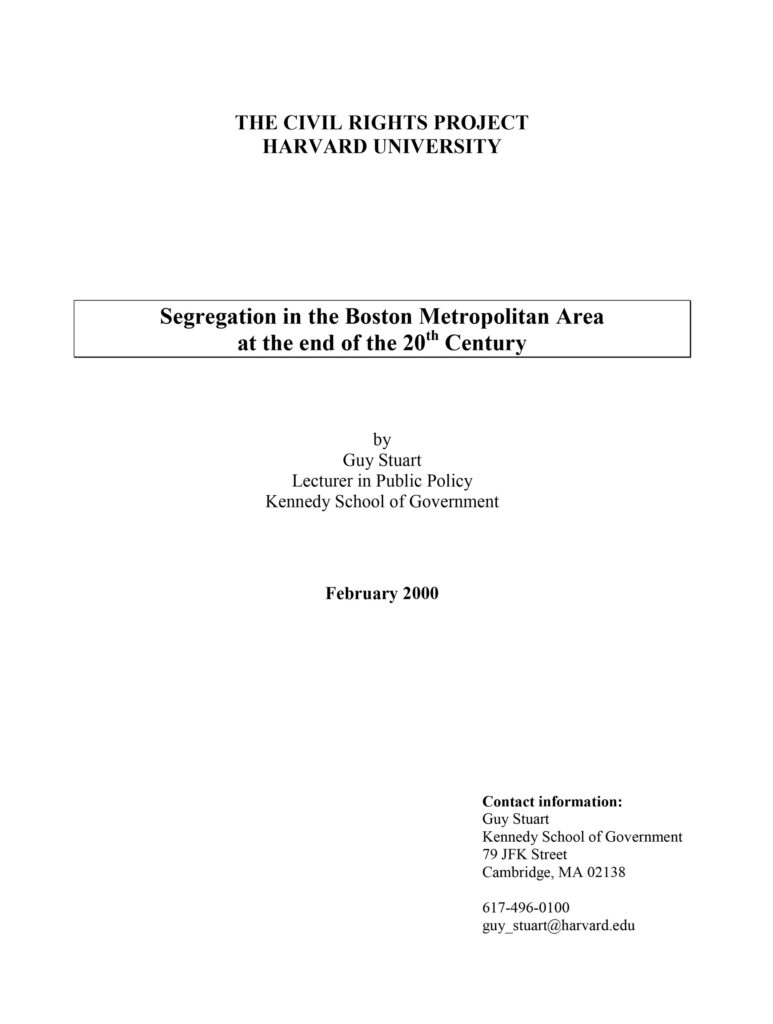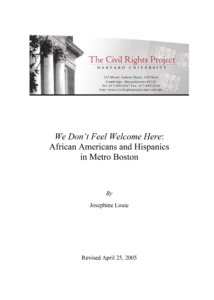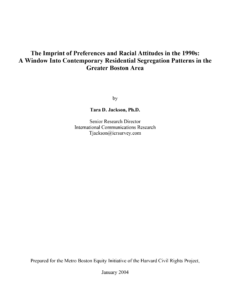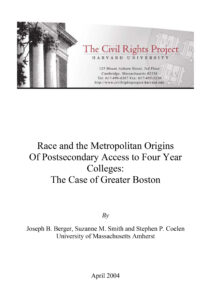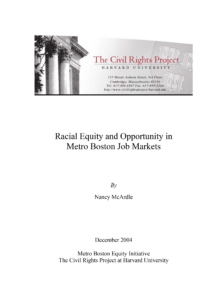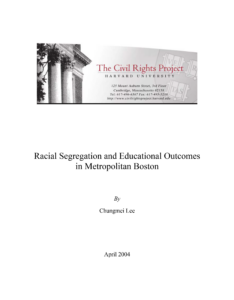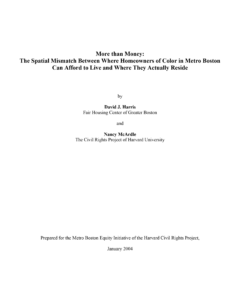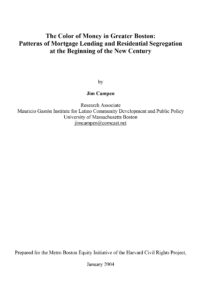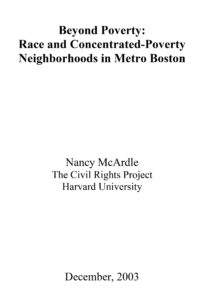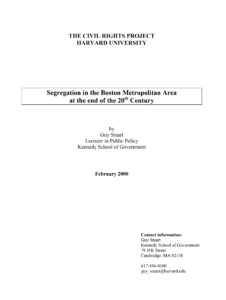Executive Summary
Throughout the United States metropolitan areas are undergoing considerable changes as minorities leave central cities and buy homes in suburbs. The Boston metropolitan area is no different. This report shows that African-American and Hispanic homebuyers are making inroads into the housing markets of towns and cities surrounding Boston. But it also shows that these buyers are concentrated in a limited number of communities: they are segregated from European-American homebuyers. In addition, the report shows that people of different incomes are buying in different communities outside of Boston — there is income segregation.
Specifically, the findings of the report are the following:
- In the Boston metropolitan area over 40% of African-American homebuyers, 60% of Hispanic homebuyers and 90% of European-American homebuyers bought homes in cities and towns outside of Boston in the period 1993 to 1998;
- Almost half of the purchases made by African-American and Hispanic homebuyers outside of Boston were concentrated in seven (7) communities out of a total of 126 communities;
- To achieve racial and ethnic integration with European-American homebuyers, over 50% of African-American and Hispanic homebuyers would have had to have bought a home in a different city or town in the 1993 to 1998 period;
- To achieve income integration between low-income and very high-income European-American buyers, almost 50% of low-income buyers would have had to have bought a home in a different city or town in the 1993 to 1998 period;
- In the city of Boston, the market share of buyers earning more than the metropolitan area median income has increased from 40% to 50% in the 1993 to 1998 period;
- Asian-American homebuyers are experiencing segregation, but to a lesser extent than African-American and Hispanic buyers.
These findings are disturbing because they indicate that despite the progress that disdavantaged minorities have made in achieving homeownership outside of Boston, there is a danger that the benefits of such ownership may not accrue to them. In particular, this report raises concerns about the potential for the emergence of highly segregated schools across the metropolitan area. Furthermore, the finding of income segregation provides evidence of the persistence of a patchwork of “have” and “have not” communities outside of Boston that affect the opportunities available to a large number of lower-income families. But the news is not all bad. Exclusive, high-income, European-American communities have not excluded all minority and low-income homebuyers. Their presence throughout the metropolitan area is a fact of life. The state, local governments and the real estate industry can provide the leadership necessary to ensure that pernicious patterns of segregation do not become entrenched in the first decade of this new century.
The Metro Boston Equity Initiative is devoted to analyzing race relations and racial equity issues not simply in the city of Boston, but across the entire metropolitan region. Although greater Boston still has a large white majority and suburban sectors with very little diversity, immigration of Latinos and Asians is driving the region’s growth, and much of this population increase is taking place well outside of the city limits.
In compliance with the UC Open Access Policy, this report has been made available on eScholarship:
